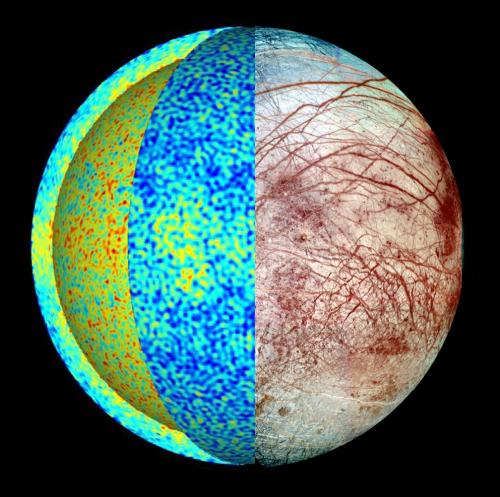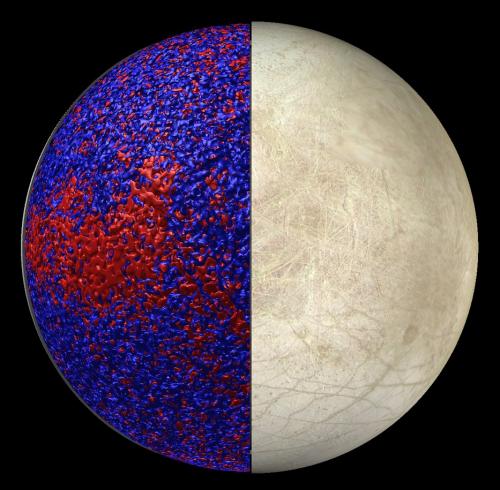

| Visitors Now: | |
| Total Visits: | |
| Total Stories: |

| Story Views | |
| Now: | |
| Last Hour: | |
| Last 24 Hours: | |
| Total: | |
Europa’s Ice Melting in Equator – Jupiter’s Moon Europa Has the Ingredients for Life
Scientists agree that the general smoothness is likely due to the existence of water beneath the icy surface—the lack of craters indicates a surface that is able to heal itself after impacts. Less of a consensus has been found regarding the rough patches, however, which scientists call “chaotic terrain.”
In this new study, the researchers used data from hydro-systems here on Earth as well as data from both Voyager and the Galileo spacecraft (which detected a magnetic field) to create what they believe is a reasonable model of a convection process working beneath the icy shell of Europa’s surface.
Watch the video here:EUROPA: Does This Icy Moon Have The Ingredients For Life? https://www.youtube.com/watch?v=gpGVBWiUxL0

This rendering shows the temperature field in a simulation of Europa’s global ocean dynamics, where hot plumes (red) rise from the seafloor and cool fluid (blue) sinks downward from the ice-ocean interface. More heat is delivered to the ice shell near the equator where convection is more vigorous. Credit: K. M. Soderlund
Some have suggested Europa’s surface gets its unique features due to the pull of gravity from Jupiter—others have suggested the sun plays a role. Such theories have not held much weight however, as there is little evidence to suggest that either could account for the chaotic terrain. Instead, the modelers suggest, it’s due to convection driven by heat from the interior of the moon itself.
Their model shows, they write that currents beneath the ice tend to deliver heat primarily to the equatorial regions of the surface which in turn causes constant heating, melting and refreezing—resulting they say, in the chaotic terrain that we are able to observe.

This rendering shows the temperature field in a simulation of Europa’s global ocean dynamics, where hot plumes (red) rise from the seafloor and cool fluid (blue) sinks downward from the ice-ocean interface. More heat is delivered to the ice shell near the equator where convection is more vigorous, consistent with the distribution of chaos terrains on Europa. Credit: Model image created by K. M. Soderlund with the image of Europa taken from NASA/JPL/University of Arizona

This rendering shows isosurfaces of warmer (red) and cooler (blue) temperatures in a simulation of Europa’s global ocean dynamics. More heat is delivered to the ice shell near the equator where convection is more vigorous, consistent with the distribution of chaos terrains on Europa. Credit: Model image created by J. Wicht with the image of Europa taken from NASA/JPL/University of Arizona
Journal reference: Nature Geoscience
PHYS.ORG
Read more at: http://phys.org/news/2013-12-moon-europa-chaotic-terrain.html


